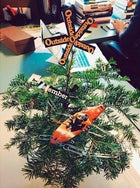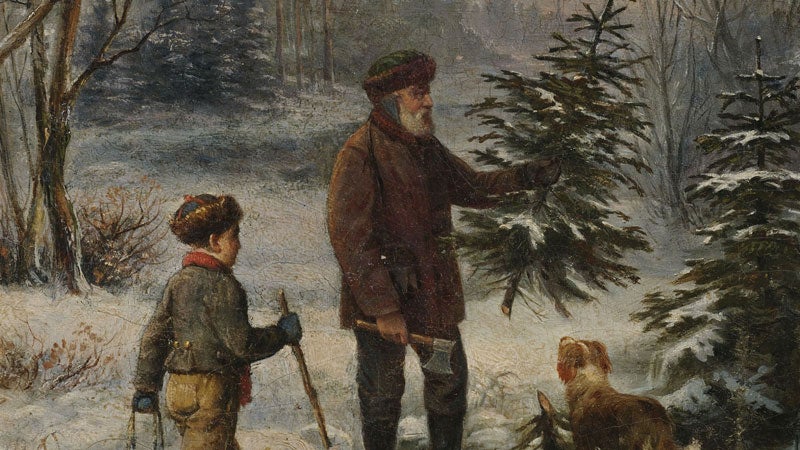Beyond grocery store parking lots and plant nurseries selling hand-raised Christmas trees are real, wild evergreens. From mid-November through December, acres of worthy pine trees on land are easyÔÇöand legalÔÇöto cut down.
 ║┌┴¤│ď╣¤═°’s mini Christmas tree hand cut and flown in straight from Rogue River-Siskiyou National Forest in southern Oregon.
║┌┴¤│ď╣¤═°’s mini Christmas tree hand cut and flown in straight from Rogue River-Siskiyou National Forest in southern Oregon.“If people are cutting their Christmas trees, they're helping by creating diversity in tree ages,” says Jean Nealson-Dean, public affairs officer for the in central Oregon. “If you have space [between trees], then they reduce the potential of large scale wildfire.”
Not only is felling your own tree acceptable, but harvesting from the forest is also less expensive, more fun, and more rewarding than selecting a tree from a parking lot.
Here's what you need to know:
Real Christmas trees aren't bought, but their permits are. The average neon orange tag cost around $10 in most states, and you won't be allowed to drive home with a tree on your roof without the proper paperwork. To purchase a permit, call the closest National Forest and ask if, and where Christmas tree permits, are available. You might be redirected to a (there are nine in the U.S.), which will have a guide to legal tree-felling locations in your state.
Purchase your day-specific permit in person, and ask for a map of the areas in the forest where you can hunt for the best tree. You can't just walk into the forest and start chopping down anything with pine needles. Don't cut trees near the road, campgrounds, or bodies of water. If the roads are good, then you can drive deep into the woods.
If there is snow on the ground, consider taking a cross-country skiing/tree hunting trip and bring a sled to haul your tree back to the car (before people figured out are super fun for sledding, they used them for carrying heavy things on the snow).
Chainsaws, double-sided axes, and flannel shirts are all optional. The only essential tools are a handsaw and straps to tie the tree to the roof. Even a regal, seven-foot-tall Silver Tip is a relative teenager in the lifespan of these trees, and your prized tree won't have too many rings to cut through. Even a simple will lay a tree horizontal in just a couple minutes.
Strapping the tree to the top of your car is just like putting a kayak on your roof rack, in fact would work great for your new Christmas tree.
A tape measure, gloves, and blanket are not required, but bringing the along is worth the effort. A tape measure is important because you can't return a tree to the forest if it's too tall for your living room. Put the blanket on the roof of your car before you mount the tree. It'll save both your paint and your ears from stratching (the sound of needles and branches scrapping against a car is just as bad as fingernails on a chalkboard).
From here on, you take care of your tree just like you picked it up from a parking lotÔÇöbut your orange tag of pride sets you apart from the tree-farm folks.
Pro Tip: Cut the trunk at a slight angle to determine the tree's fall. Also, loggers (not lumberjacks) say “tree” (not “timber”) when felling a tree in the Pacific Northwest.


